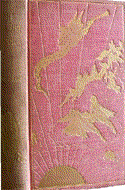PREFACE
All people in the world tell nursery tales to their children. The Japanese tell them, the Chinese, the Red Indians by their camp fires, the Eskimo in their dark dirty winter huts. The Kaffirs of South Africa tell them, and the modern Greeks, just as the old Egyptians did, when Moses had not been many years rescued out of the bulrushes. The Germans, French, Spanish, Italians, Danes, Highlanders tell them also, and the stories are apt to be like each other everywhere. A child who has read the Blue and Red and Yellow Fairy Books will find some old friends with new faces in the Pink Fairy Book, if he examines and compares. But the Japanese tales will probably be new to the young student; the Tanuki is a creature whose acquaintance he may not have made before. He may remark that Andersen wants to ‘point a moral,’ as well as to ‘adorn a tale; ‘ that he is trying to make fun of the follies of mankind, as they exist in civilised countries. The Danish story of ‘The Princess in the Chest’ need not be read to a very nervous child, as it rather borders on a ghost story. It has been altered, and is really much more horrid in the language of the Danes, who, as history tells us, were not a nervous or timid people. I am quite sure that this story is not true. The other Danish and Swedish stories are not alarming. They are translated by Mr. W. A. Craigie. Those from the Sicilian (through the German) are translated, like the African tales (through the French) and the Catalan tales, and the Japanese stories (the latter through the German), and an old French story, by Mrs. Lang. Miss Alma Alleyne did the stories from Andersen, out of the German. Mr. Ford, as usual, has drawn the monsters and mermaids, the princes and giants, and the beautiful princesses, who, the Editor thinks, are, if possible, prettier than ever. Here, then, are fancies brought from all quarters: we see that black, white, and yellow peoples are fond of just the same kinds of adventures. Courage, youth, beauty, kindness, have many trials, but they always win the battle; while witches, giants, unfriendly cruel people, are on the losing hand. So it ought to be, and so, on the whole, it is and will be; and that is all the moral of fairy tales. We cannot all be young, alas ! and pretty, and strong; but nothing prevents us from being kind, and no kind man, woman, or beast or bird, ever comes to anything but good in these oldest fables of the world. So far all the tales are true, and no further
PREFAZIONE
Tutta la gente nel mondo racconta fiabe ai propri bambini. Lo fanno i giapponesi, i cinesi, i pellerossa intorno ai fuochi degli accampamenti, gli eschimesi nei loro bui igloo invernali. Lo fanno i bantu del Sud Africa, e i greci moderni, come gli antichi egizi, quando Mosè da non molti anni era stato tratto in salvo dal canneto. I tedeschi, i francesi, gli spagnoli, gli italiani, i danesi, i montanari scozzesi le raccontano loro e le storie tendono a sembrare l’un l’altra dappertutto. Un bambino che abbia letto i libri Blu, Rosso e Giallo troverà alcuni vecchi amici con nuovi volti nel libro Rosa, se esamina e confronta. Ma le fiabe giapponesi saranno nuove per il giovane studente; il Tanuki è una creatura della quale prima non aveva fatto conoscenza. Può osservare che Andersen voglia “indicare una morale” così come “dar lustro a una fiaba”; che stia tentando di burlarsi delle follie dell’umanità, così come esistono nei paesi civilizzati. Il racconto danese di “La Principessa nella Cassa” non deve essere letto a un bambino troppo nervoso, visto che sconfina nel racconto di fantasmi. È stato alterato ed è davvero più orrorifico nella lingua dei Danesi i quali, come ci racconta la storia, non sono un popolo nervoso o timido. Sono abbastanza sicuro che questo racconto non sia vero. Gli altri racconti danesi e svedesi non sono inquietanti. Sono stati tradotti da Mr. W.A.Craigie. Quelli dal siciliano (dal tedesco), come le fiabe africane (dal francese), catalane e giapponesi (queste ultime dal tedesco) e un vecchio racconto francese, sono tradotti da Mrs. Lang. Miss Alma Alleyne ha tratto i racconti da Andersen, dal tedesco. Mr. Ford, come al solito, ha disegnato i mostri e le sirene, i principi e i giganti e le belle principesse che, secondo il curatore, sono più belle che mai, se è possibile. Qui, allora, ci sono fantasie portate da tutte le regioni: vediamo che la gente nera, bianca e gialla è appassionata dello stesso tipo di avventure. Coraggio, gioventù, bellezza, gentilezza subiscono molte prove, ma vincono sempre la battaglia; mentre streghe, giganti, crudele gente ostile, sono la parte perdente. Così dovrebbe essere, e così, nel complesso, è e sarà; e questa è la morale delle fiabe. Non possiamo essere tutti giovani, ahimè, e graziosi e forti; ma niente ci impedisce di essere gentili, e nessun uomo, donna, o animale o uccello gentile arriva a qualcosa che non sia buono in queste vecchissime fiabe del mondo. Fino a questo punto tutte le fiabe sono vere, ma non oltre.

